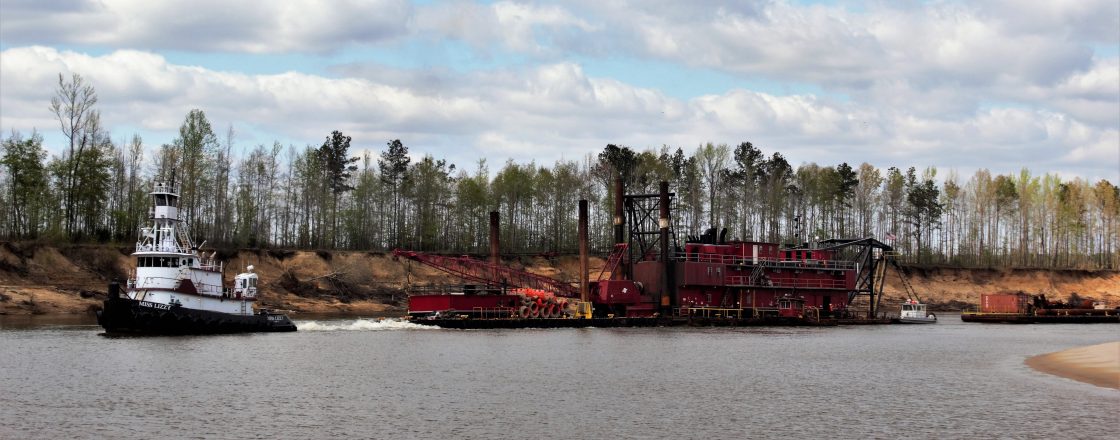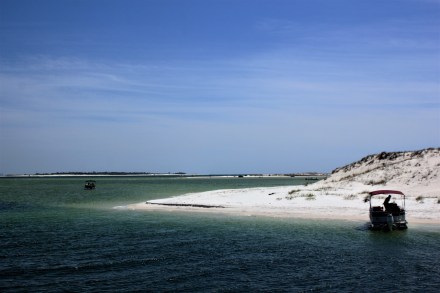There was bad weather looming, but we had a beautiful day travelling along the Intracoastal Waterway through the lovely Perdido Bay and Big Lagoon. Before we left Ingram Bayou, we were entertained by some dolphins diving and splashing not far from us.
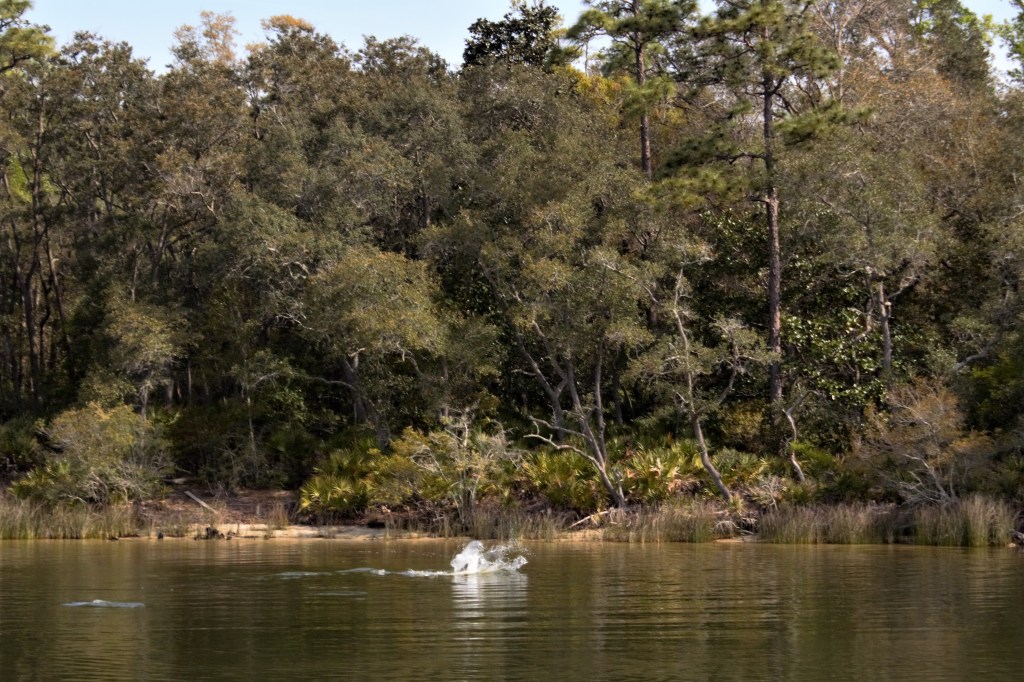
Big Lagoon separates Perdido Key, the long barrier island, from the mainland. The dark blue water contrasted against the white sand, which is composed mainly of quartz crystals, washed down from the Appalachian Mountains in another age.
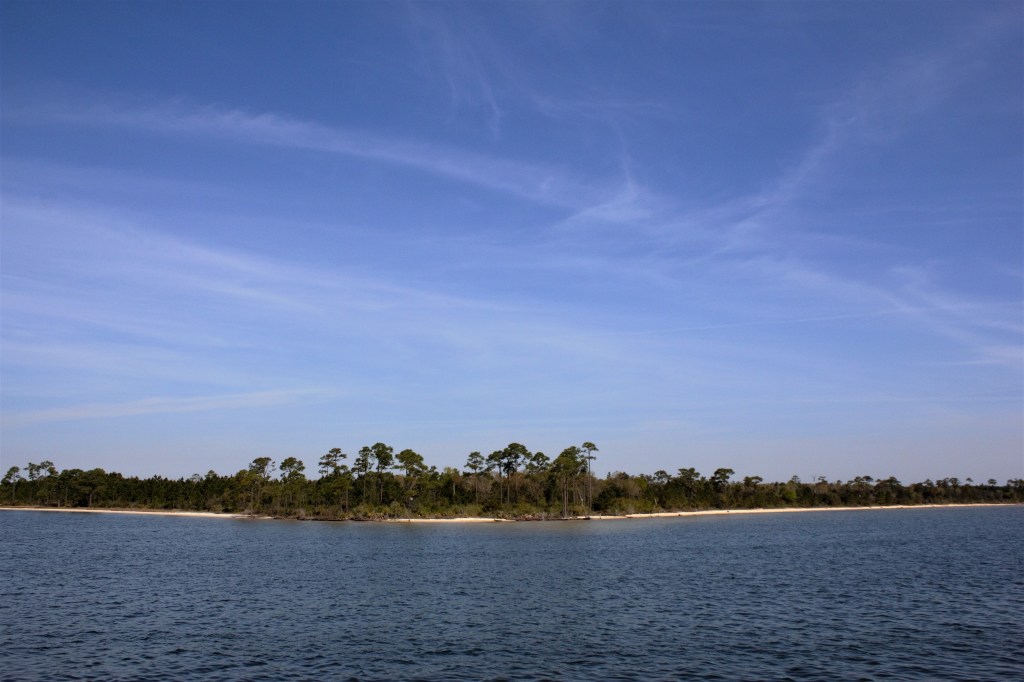
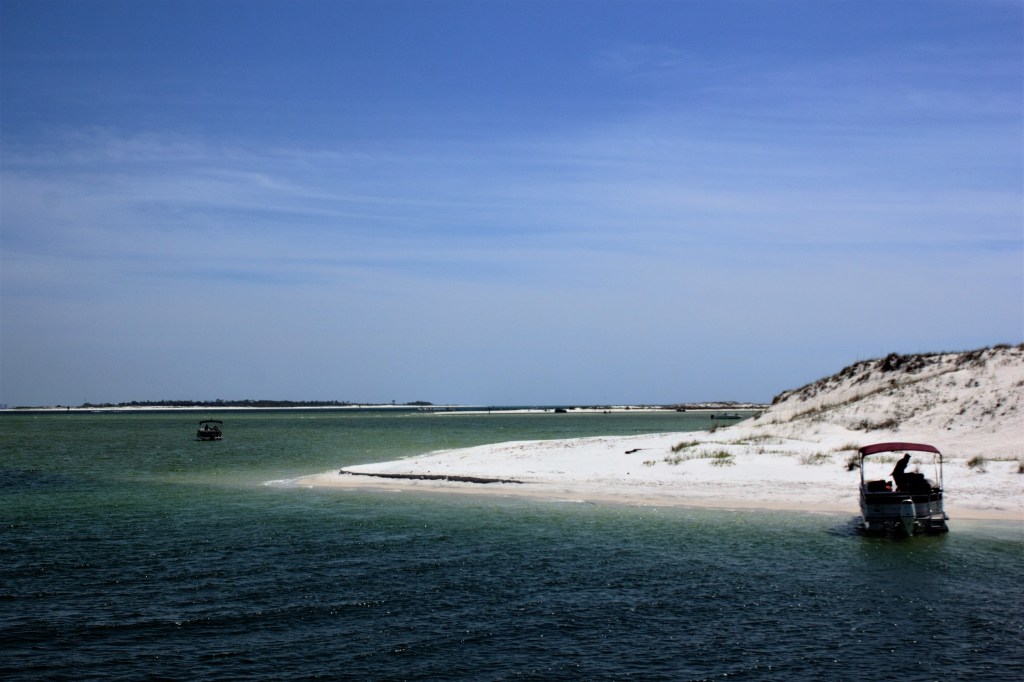

The area was first inhabited by the Pensacola people, and was settled in 1559 by the Spanish. Now, it’s a seaport and has a US Naval Air Station which is the home of the Blue Angels, which just happened to be practising as we approached Santa Rosa Island.
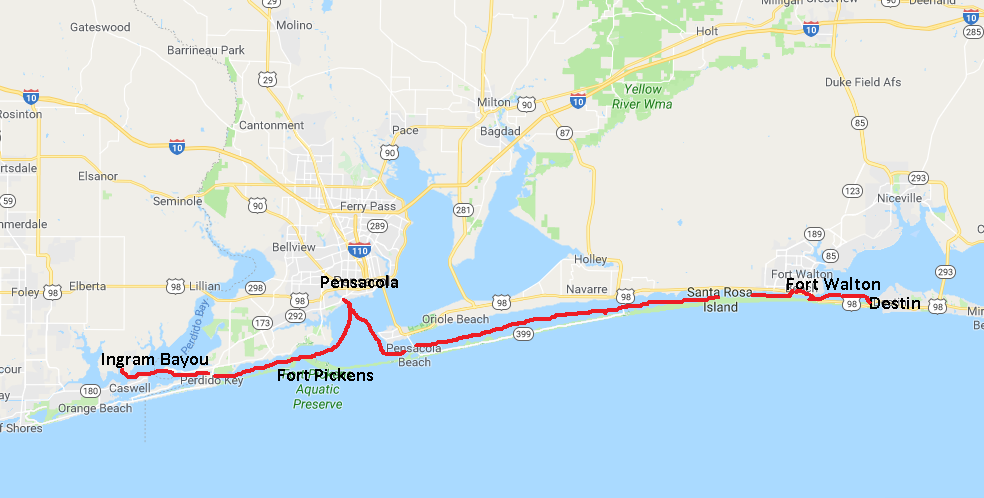
We booked into the Pensacola Shipyard and Marina at Warrington to sit out the bad weather which was approaching. The next four days were going to be fairly bad, really bad, a brief respite, and then bad again. As the next day looked like the least awful day, we decided to hire a car to do a little sightseeing and shopping before the onslaught.

Ian has been such a good customer of Enterprise Car Hire that we were due a free hire, which cheered us up a bit. We decided to go to see Fort Pickens, strategically placed at the western end of Santa Rosa Island, where there is also an Aquatic Preserve. Unfortunately, some human error had crept into the satnav-programming operation and it was some time before we realised that we had driven 20 miles in an easterly direction, and would have to turn around and drive all the way back again.
Eventually we found the right bridge leading to Pensacola Beach and Santa Rosa Island. By this time it was windy and raining. and the high rises, beach houses, bars, restaurants and condos looked rather dispiriting in the greyness. The road narrowed to a single track as it continued for several miles along the spit of land to the promontory where the fort was. On either side were dunes and grasses, and we had glimpses of the sea. Despite the bleak scene, I would have liked to stop the car to take photographs, but by this time we were within the Reserve boundary and stopping wasn’t permitted.
Fort Pickens was built in 1834 and remained in use till 1947. During the Civil War it was a Union stronghold. In its day it had been extensive, but it had been neglected and allowed to fall into disrepair, before being placed on the National Register of Historic Places.



There were impressive archways and brickwork, and one part of the fort had been added in the 1890s and constructed of reinforced concrete. It must have been one of the earliest uses of reinforced concrete, and Ian could not resist inspecting it closely.
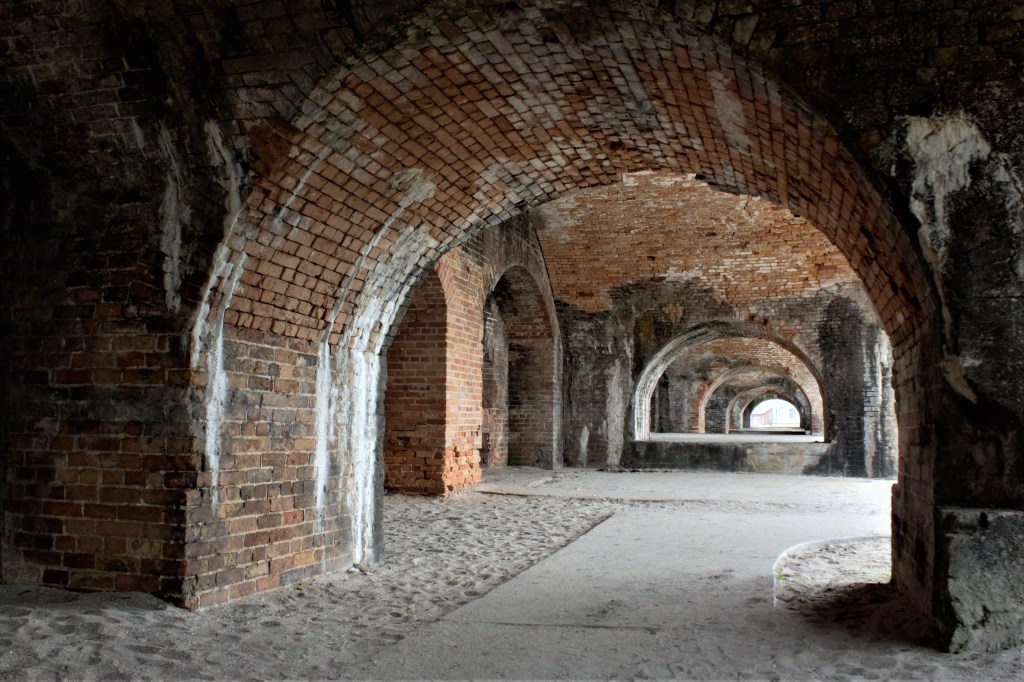
Wild flowers grew among the ruins. This is Tradescantia ohiensis, or Confederate Spiderwort.

We didn’t really make the most of Pensacola. There was a restaurant with live music just down the road, but we couldn’t be bothered going out in the wind and rain. The next day was even worse, and rather than venturing out to see the historic town centre, our activities were confined to checking the engine, and making forays to the laundry in between the squalls and thunderstorms.
A short break in the weather the next day allowed us to get to Fort Walton, where there is a free dock next to the public park.
We briefly ran aground while trying to get onto the slip, but Ian has had practice at getting out of this particular difficulty, and the usual manoeuvre of reversing at high revs once again extricated us from an embarrassing situation. We had been seen by some local guys whose sailboat was in one of the slips, and they helped us tie up along the end of the dock, away from the shallow water.
Unfortunately, there was a problem. As well as the usual piles to tie up to, there some extra ones on the outside, which resulted in a 4′ gap between the boat and the dock. I couldn’t put my foot down on our step, while at the same time keeping a hold of the deck rail.
There was no way I was going to take a flying leap from the boat, despite the disparaging comments from some quarters and the amusement afforded to the guys who had helped us dock.
We needed groceries, and Ian had to go to Publix by himself.

Ian had no such qualms. He was quite happy to stride, no hands, from the boat to the dock and back again.

There was a police presence in the park, and Ian had to report to them when we got there. It might have been reassuring to have them there, but actually it wasn’t. We couldn’t help wondering what went on, that needed them to be there, especially as in the early evening, our friends next door vacated their slip and anchored out, a few yards away, before returning to the dock the next morning.
The police, though, were assiduous in their duty. At 6.30 the next morning, just as I was making the first cup of tea of the day, a knock on the cabin window had Ian leaping out of bed. The police just wanted to point out that we were tied up next to the pump-out, and were we going to use it.
We managed to get to Destin, where there is a natural harbour off Choctawhatchee Bay, before the next bout of bad weather hit us. We anchored there and were able take the dinghy to go ashore to go out for lunch at Gilligans and get an Uber to the supermarket. Things have certainly become easier since the advent of Uber, and the supermarket, Winn Dixie’s, was the best we’d been in for quite a while. They had proper cheese from a farm in Wisconsin, and a fish counter, so for the first time this trip I was able to cook fresh fish for dinner.



